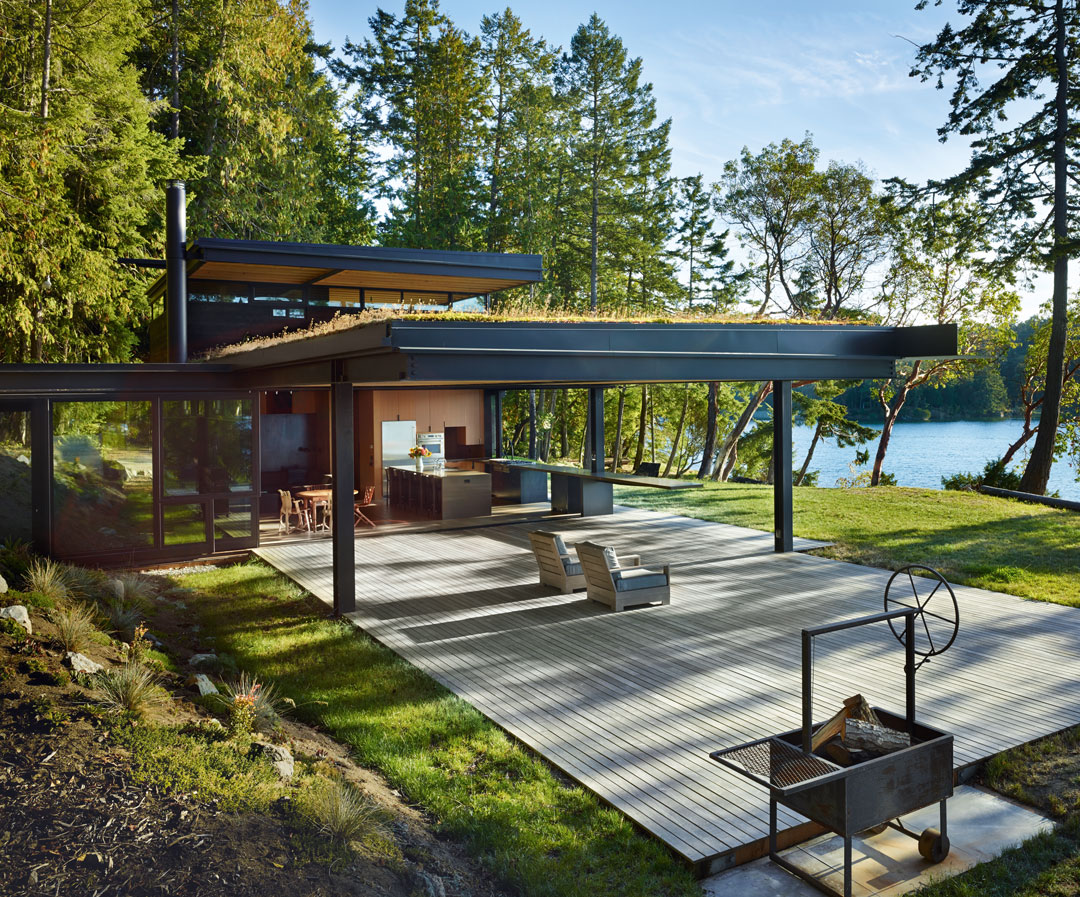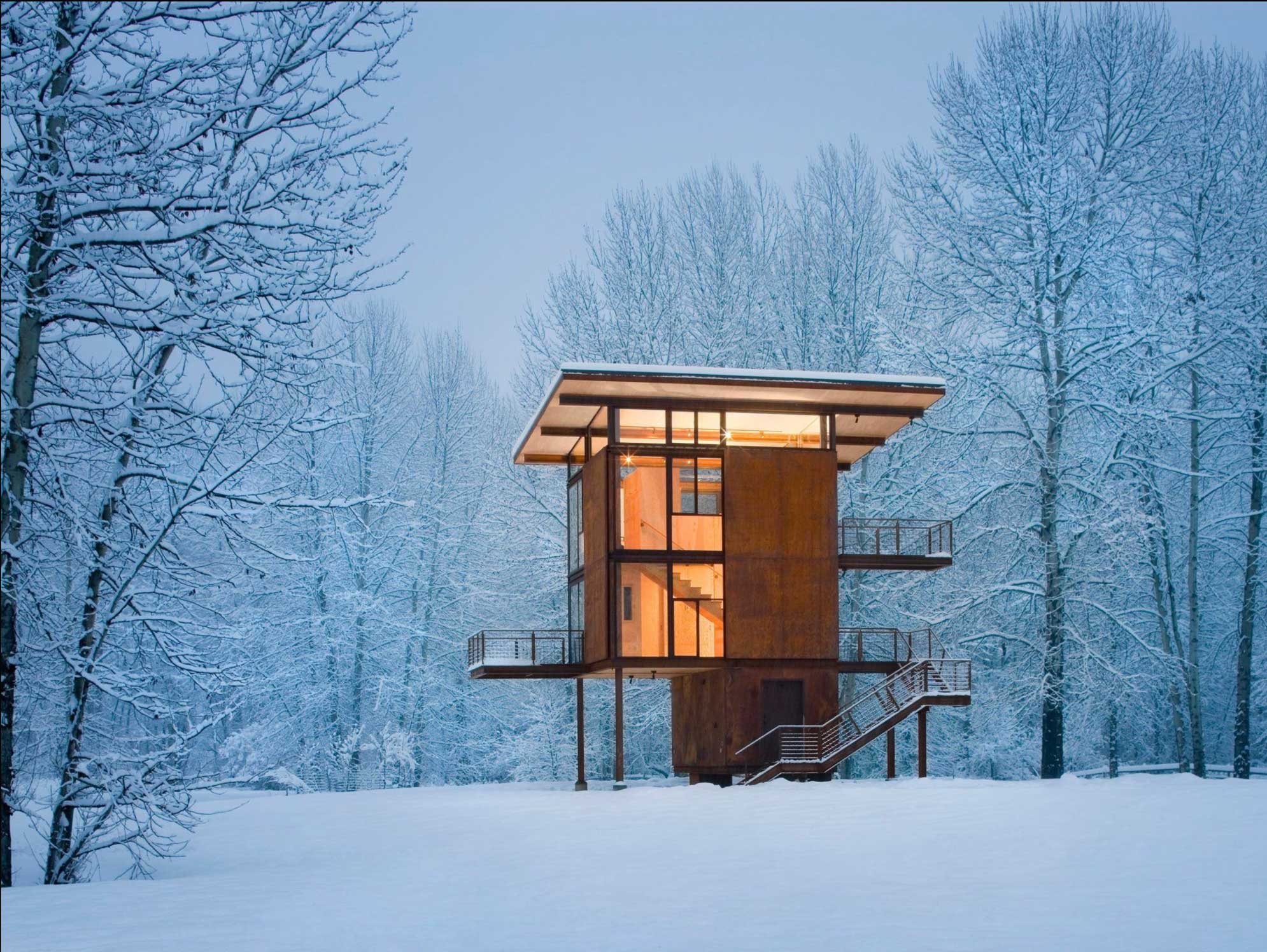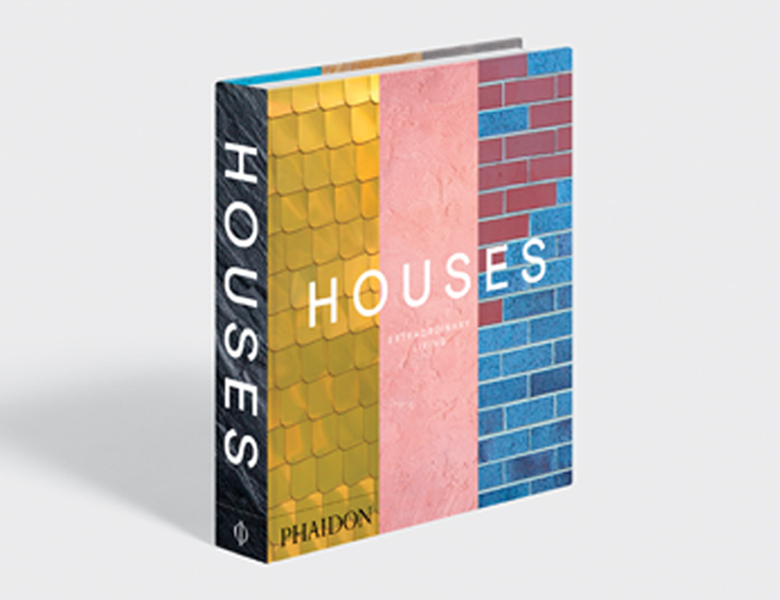
Tom Kundig on how to build an extraordinary house
The architects in Houses: Extraordinary Living explain how they put drama into domestic living
If you could build your dream home, what would it look like? Obviously the answer will be a different one according to who you ask. Taste is highly subjective and each space is a personal reflection of the homeowner.
So who better to ask for a different kind of answer than some of the architects featured in our new book Houses: Extraordinary Living. After all, the book explores 400 of the world’s most innovative and influential architect-designed houses created since the early 20th century.
According to Tom Kundig, owner and design principal of Seattle-based architecture firm Olson Kundig, there are “an infinite number of design solutions for a home” - a view anyone who's taken a look at the work on Olson Kundig's website will agree with.
Kundig's practice, Olson Kundig, has two houses featured in Houses: Extraordinary Living: Pole Pass Retreat, an idyllic seaside home in the San Juan Islands, Washington and Delta Shelter, a cabin in Mazama, Washington that blends into the wooded grove surrounding it due to its warm, earthlike colouring.

Pole Pass Retreat occupies one of 172 named islands in the San Juan archipelago, on a densely wooded plot facing out toward the Salish Sea. To take advantage of the island’s pure air and temperate climate, the house needed to be as flexible as possible for inside and outside living. On the low-slung, two-story pavilion, a massive sedum roof cantilevers outward, covering the deck. Thanks to a system of gears and chains cranked by a hand-turned wheel, the pavilion’s glass walls—the largest of which is 20 feet (6 metres) long—can be slid back completely. Cedarwood cladding was utilized, slightly charred in a Japanese weatherproofing technique called shou sugi ban.
With both houses, the surrounding natural landscape largely informed the design, an element that’s important to Kundig when creating a residential space. We asked Kundig what other factors he takes into account when building an ideal home.

What is the most important element when you take on a commission to design a house? There are many important elements that work together and inform each other: the site, the climate, the tectonics of the place, the technology that exists. The client, certainly, is a hugely important element as well. Our job as architects is to take all of those elements and combine all of the different vectors into a coherent response, so I don’t think of any one single consideration as the most important.
If you could build a house in any environment, which would you choose? A difficult question, because virtually all environments are interesting to me. Right now, I think the most exciting environment is an urban one. Designing for a dense urban city offers the opportunity for an appropriate architectural response to the environment and the needs of growing populations, while reducing stress on the most beautiful natural landscapes.
Is there any architectural style that should never be applied to a home? It isn’t a rule, per se, but I think the design of a home should never ignore its unique situation or context. Homes have an infinite number of design solutions, because there are an infinite number of unique cultural, contextual situations that should inform the design. If the response is appropriate and engages the context, then there’s no reason why any architectural style should be off-limits.
What is your favorite house in the book? Choosing a favorite is virtually impossible, because there are so many great houses included in the book. The two that stand out most to me are Albert Frey’s Frey House II in Palm Springs and Pierre Chareau’s Maison de Verre in Paris. Both houses engage directly with the context of their place in exciting and masterful ways at a variety of scales—from large-scale, to mid-scale, down to the nano-scale. The Frey House is a direct response to the desert climate and landscape on a number of levels, while the Maison de Verre is a complete urban masterpiece. To me, the kind of architecture that is most important and impactful is architecture that is in its landscape or context rather than simply placed on the context.
Houses: Extraordinary Living celebrates the incredible diversity and beauty of the house as never before, from Modernist icons to feats of technological, material, and spatial innovation in the 21st century. Take a look at it here.